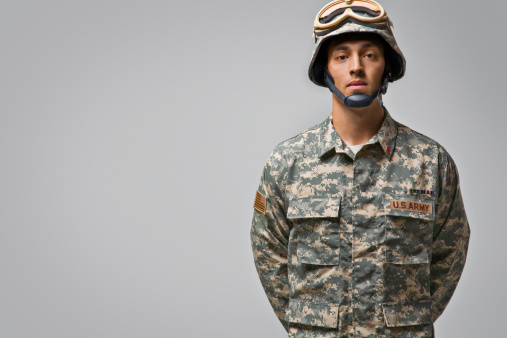Although doctors still have difficulty finding direct evidence of mild traumatic brain injuries, a new device may help identify the injuries in soldiers affected by bomb blasts. Rather than look to the body for signs of injury, doctors are using “Blast Badges” to determine the force of the blast and therefore the likelihood that a traumatic brain injury occurred.

Delayed or Mild Symptoms
Many concussions go undiagnosed because of mild symptoms or because the damage causes poor judgment responses in the soldier. The injured person may not come forward to discuss the headaches, dizziness, nausea or distractibility. Some simply do not recognize the seriousness of the danger. If a second injury occurs before the first heals, the results could be deadly.
Imaging Tests Inadequate
Although advanced scanning techniques will sometimes show signs of brain injury, they are unreliable. In many cases, doctors can only identify brain damage if they have previous scans available for comparison. X-rays, CT scans and MRIs have all failed as reliable means for diagnosing traumatic brain injury.
The Blast Badge
The blast badge is a new twist on the impact indicator, a device used to measure impact in shipping packages. Some may remember these devices from the popular television show Myth Busters, where the hosts measured the force of collisions on test dummies. Those devices use magnets to show the intensity and direction of force. Blast badges are small and lightweight like impact indicators, but the technology is entirely different.
Color Changing Crystals Reveal Force of Shockwaves
Engineers at the University of Pennsylvania found that certain color-changing crystals react to the types of shock waves found in explosions. Designed to break apart when different intensities of shockwave hit, the badges will change color. The online issue of NeuroImage[1] published the findings.
Douglas H. Smith, MD, lead author of the report, professor of Neurosurgery at the University of Pennsylvania, and director of the Center for Brain Injury and Repair explains, “We wanted to create a ‘blast badge’ that would be lightweight, durable, power-free, and perhaps most important, could be easily interpreted, even on the battlefield. We chose color-changing crystals that could be designed to break apart when exposed to a blast shockwave, causing a substantial color change.” [2]
Each hue signifies a different level of force. Scientists now need to measure specific units of force and match them to the corresponding color change. Once researchers have this information, they can indicate which color changes will indicate a brain-injury causing blast.
Researchers picture the blast badges becoming standard additions to uniforms and helmets. They will be easy to read and easy to replace once used. If it functions as expected, the technology should ensure that brain-injured soldiers finally gain access to the appropriate treatment when they need it.
Contact Us
If you or a loved one suffers from a traumatic brain injury, contact our experienced attorneys for a free consultation. We will review your case and provide details about your legal rights, so you can decide if you should file a brain injury lawsuit.
[1] http://www.sciencedirect.com/science/article/pii/S1053811910013844
[2] http://www.uphs.upenn.edu/news/News_Releases/2010/11/blast-badge-indicates-brain-injury-risk/


